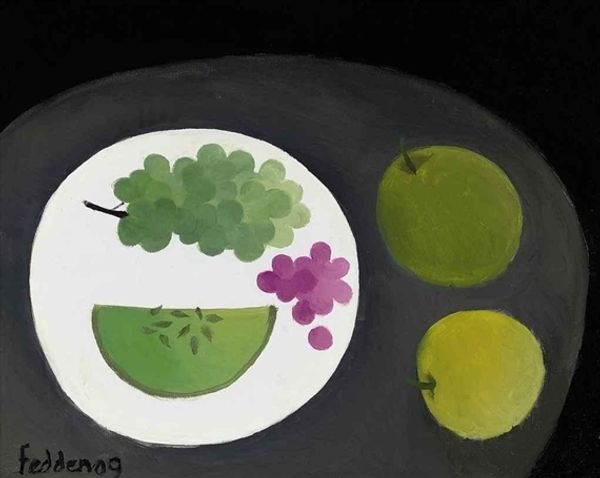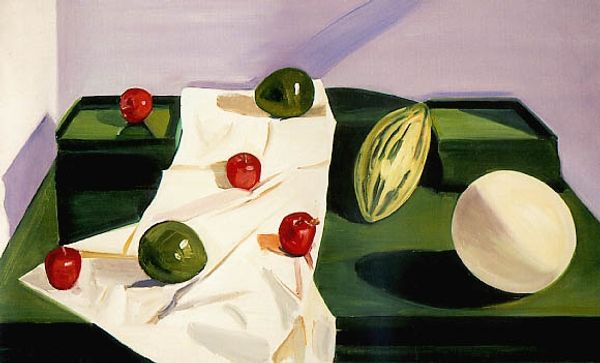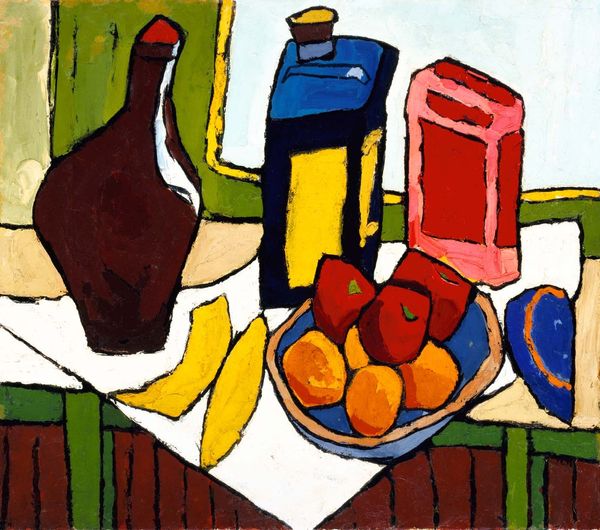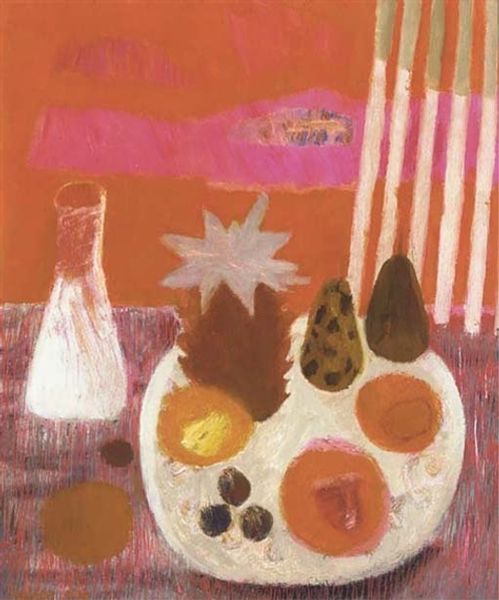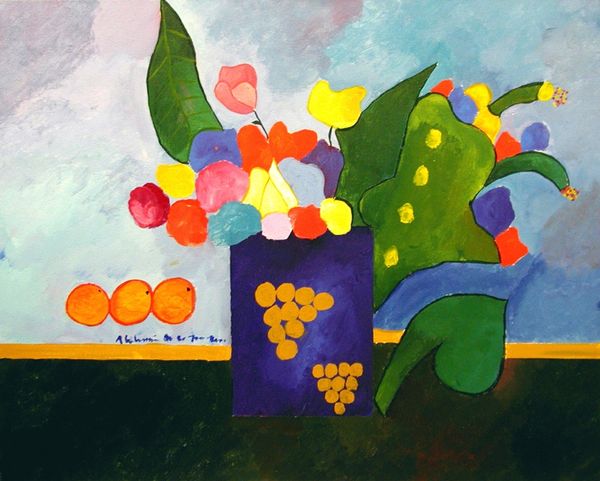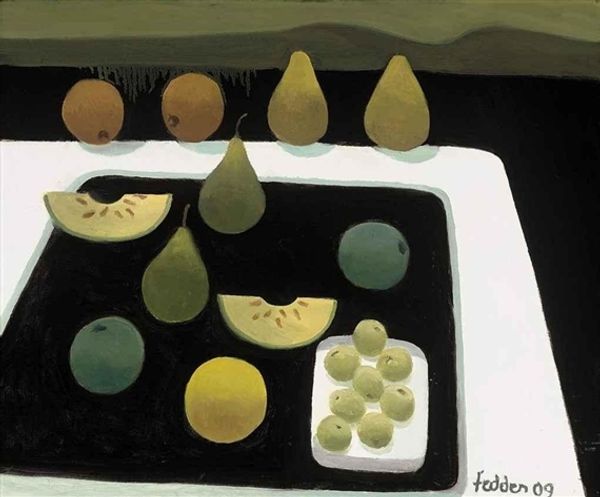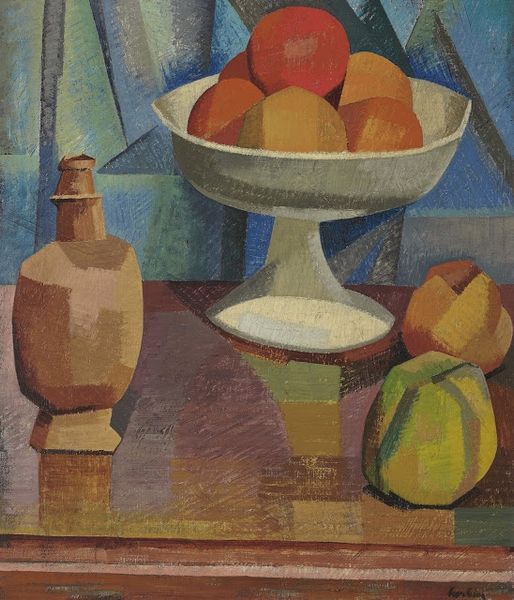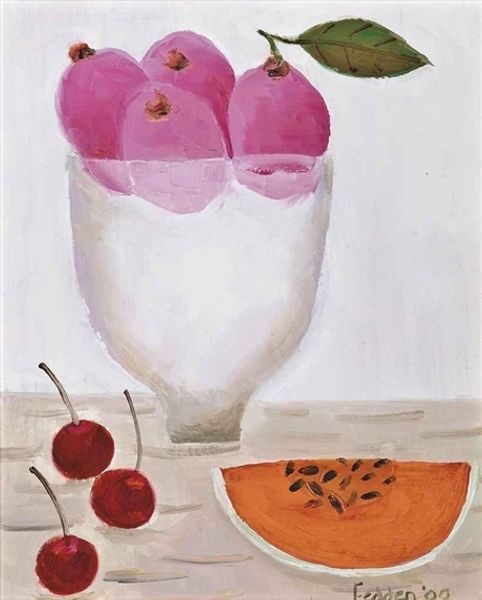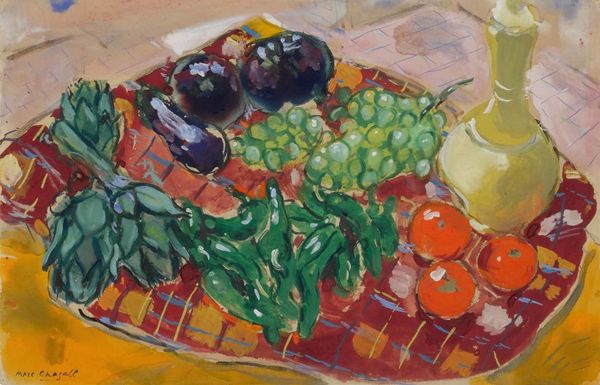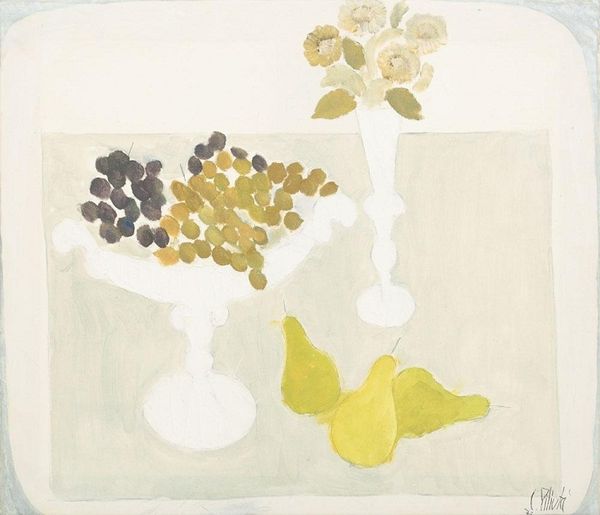
painting, oil-paint
#
painting
#
oil-paint
#
oil painting
#
intimism
#
fruit
#
modernism
Copyright: Mary Fedden,Fair Use
Curator: This is "Fruit," an oil painting by Mary Fedden, created in 2009. The composition presents an array of fruit, a plate, and a bottle. There's a playful, almost childlike simplicity to its execution. Editor: Yes, there's an immediate feeling of naivete, with the almost awkwardly placed fruit. The heavy reliance on geometrical shapes also creates a strange balance. But what strikes me most is her handling of the oil paint—she flattens forms into zones of colour, abstracting each piece of fruit into pure color, almost obliterating the individual details. Curator: Fedden's artistic journey included influences from modernism, and she synthesizes a vocabulary where geometric forms articulate a deep intimacy with everyday objects. This intimate, almost domestic approach is not as politically indifferent as one might assume. Think about how gendered the domestic space has been— and Fedden has managed to assert her gaze through it. Editor: Exactly, it brings us to the labor behind artistic production. What are her means of creating such domestic space and does it go deeper into a gendered perspective on labour and its association with painting still lives? It speaks volumes that she created this quite late in life as well. What was it about materiality that still attracted her so deeply? Curator: She’s definitely engaging with a history of still-life painting while challenging its perceived limitations. It seems that "Fruit" and other of her later paintings are really a culmination of decades thinking and understanding form, materiality, social conventions, gendered power dynamics and representation in its multiple forms. It speaks not only to a physical arrangement of fruit but to a social history and Fedden's navigation through it. Editor: I'm fascinated how a supposedly simple composition invites such multi-layered interpretations. You begin to realize there’s really nothing innocent about its arrangement when we begin to pick it apart, as each object suggests multiple discourses through its production and reception in time. It is interesting to think that through a seemingly domestic painting you start to uncover complex arguments. Curator: Precisely. I leave with a greater appreciation of Mary Fedden’s negotiation with art and her role as a woman within shifting cultural landscapes. Editor: I will be thinking more about the value she puts on material and how this still life painting is really a result of someone mastering and loving a medium.
Comments
No comments
Be the first to comment and join the conversation on the ultimate creative platform.

